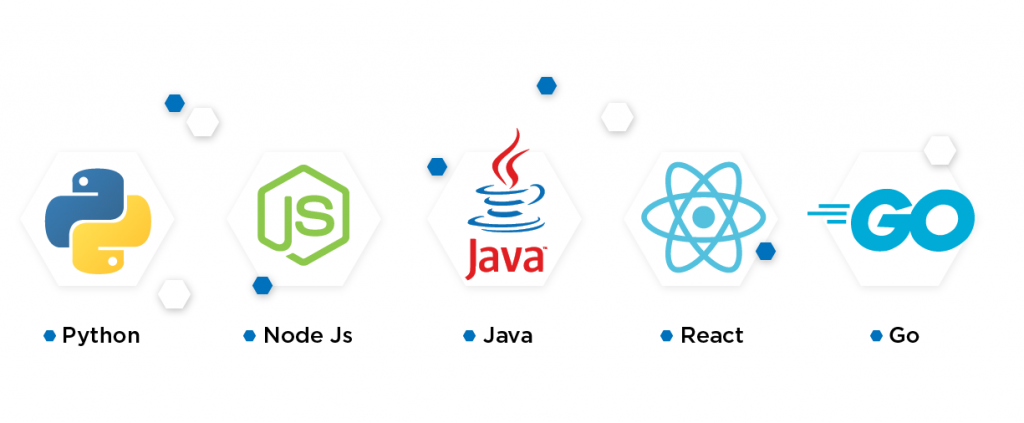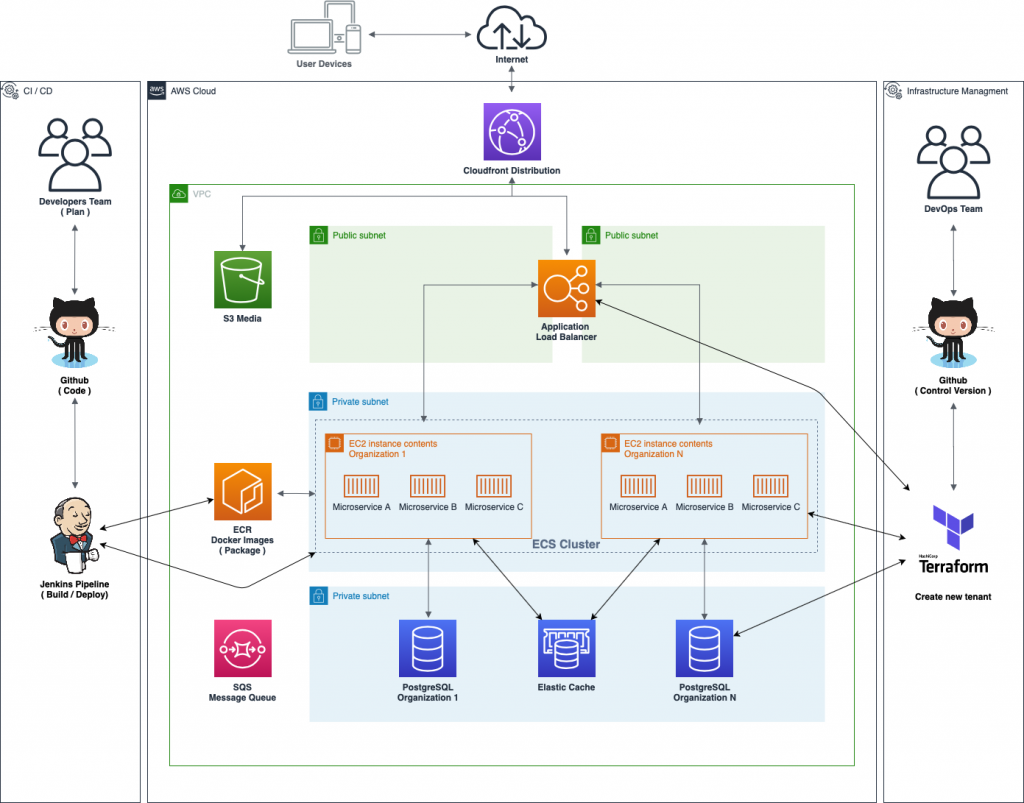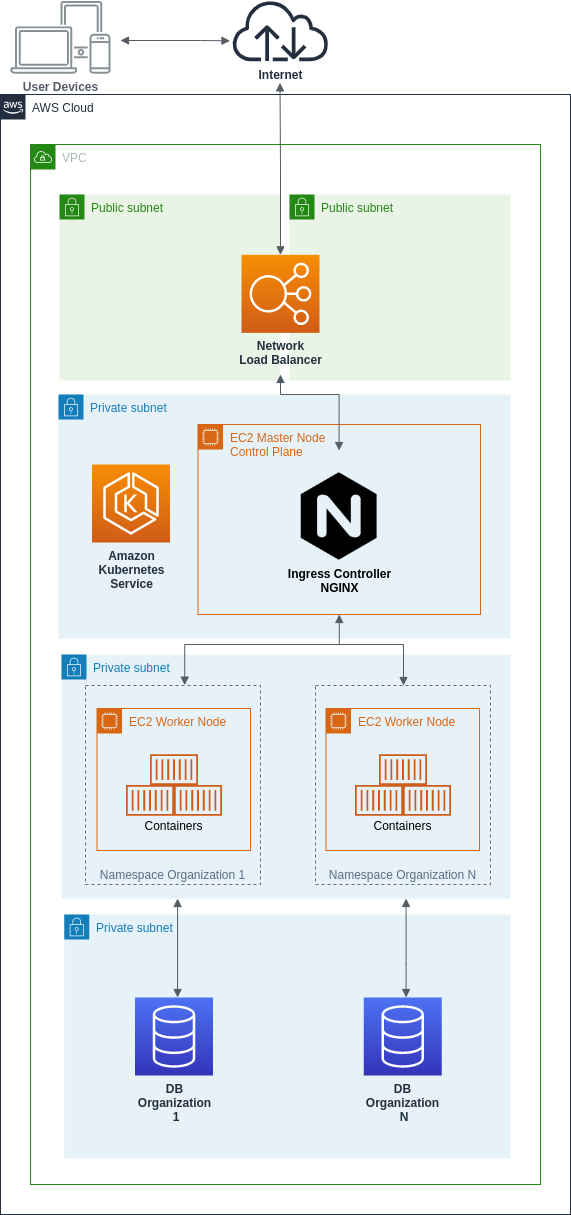
Join the DZone community and get the full member experience.
SaaS applications are the new normal nowadays, and software providers are looking to transform their applications into a Software As a Service application. For this, the only solution is to build a multi-tenant architecture SaaS application. Have you ever wondered how Slack, Salesforce, AWS (Amazon Web Services), and Zendesk can serve multiple organizations? Does each one have its unique and custom cloud software per customer? For example, have you ever noticed that, on Slack, you have your own URL “yourcompanyname.slack.com?”
Most people think that, in the background, they created a particular environment for each organization—application or codebase—and believe that Slack customers have their own server/app environment. If this is you, you might have assumed they have a repeatable process to run thousands of apps across all their customers. Well, no. The real solution is a multi-tenant architecture on AWS for a SaaS application.
Let’s start with this impressive fact: 70% of all web apps are considered SaaS applications according to IDC Research. So, if you know about SaaS architecture and multi-tenant, you are probably covering 70% of the web app architecture landscape that would be available in the future.
“70% of all web apps are SaaS, but only a few of them are multi-tenant.”
This research is intended to showcase an overview of the strategies, challenges, and constraints that DevOps and software developers are likely to face when architecting a SaaS multi-tenant application.
There are two concepts that are important for us to understand before starting:

The next points are what we will explore in a multi-tenant architecture for your SaaS application, and my contributions will be:
First of all, you need to understand what single tenant and multi-tenant architecture is:

Bear in mind that in this paper, we will discuss two multi-tenant architecture models, one for the application layer and one for the database layer.
The adoption of a multi-tenant architecture approach will bring extensive valuable benefits for your SaaS application.
Let’s go through the next contributions:
To build a multi-tenant architecture, you need to integrate the correct AWS web stack, including OS, language, libraries, and services to AWS technologies. This is just the first step towards creating a next-generation multi-tenant architecture.
Even though we will surface a few other multi-tenant architecture best practices, this article will be primarily oriented to this AWS SaaS web stack.
Let’s dive into our SaaS Technology Stack on AWS:
It doesn’t really matter which language platform you select. What is vital is that your application can scale, utilize multi-tenant architecture best practices, cloud-native principles, and a well-known language by the open-source community. The latest trends to build SaaS applications are Python + React + AWS. Another “variant” is Node.js + React + AWS, but in the end, the common denominators are always AWS and React. If you are a financial company, ML or AI, with complex algorithms or backend work, I’ll say you should go for Python.
On the other hand, if you are using modern technologies like real-time chats, mini feeds, streaming, etc. then go for Node.js. There is a market in the banking sector that is leveraging Java, but that’s for established enterprises. Any new SaaS application better goes with the mentioned web stack. Again, this is just what I’ve noticed as a trend, and what the community is demanding.
Note: This data comes from a survey we performed a few months ago for financial services and SaaS companies.
 Cloud Provider
Cloud ProviderAs a team of DevOps experts, I’ve noticed a cloud variation in the last two years, and which corresponds to these percentages: 70% of our DevOps implementations are based on AWS, 25% with Azure, and 5% go to GCP and digital ocean. Each year the trend is similar, with the exception that Azure is gradually growing with the years. Those are not only my words, but also ideas supported by multiple DevOps partners. So, I strongly recommend deploying your SaaS application under AWS. It has a number of benefits; every day there is a new service available for you, and a new feature that facilitates your development and deployment. Totally recommended to deploy your SaaS on AWS.
If you are planning to leverage the cloud, you must leverage cloud-native principles. One of these principles is to incorporate microservices with Docker. Make sure your SaaS application is under microservices, which brings multiple benefits, including flexibility and standardization, easier to troubleshoot, problems isolation, and portability. Just like the cloud, Docker and microservices have transformed the IT ecosystem and will stay for a long while.
This is a complicated and abstract decision; there are three options in AWS to manage, orchestrate, and create a microservice cluster environment:
The inherent database will be PostgreSQL with Amazon RDS. However, I strongly recommend that if you have a senior development team, and are projecting a high-traffic for your SaaS application—or even hundreds of tenants—you’d better architect your database with MongoDB. In addition to this, utilize the best practices that will be mentioned below about multi-tenant database. In this case, I would go for Amazon RDS with PostgreSQL or DynamoDB (MongoDB).
“If you are projecting a high-traffic for your SaaS application, you’d better architect your database with MongoDB.”
GraphQL is a query language and an alternative to a RESTful API for your database services. This new and modern ecosystem is adopted as a middleman among the client and the database server. It allows you to retrieve database data faster, mitigate the over-fetching in databases, retrieve the accurate data needed from the GraphQL schema, and maintaining the speed of development by iterating more quickly than a RESTful service. Adopting a monolithic backend application into a multi-tenant microservice architecture is the perfect time to leverage GraphQL or AppSync. Hence, when transforming your SaaS application, don’t forget to include GraphQL!
Note: I didn’t include this service in the AWS SaaS architecture diagram, because it is implemented in multiple ways, and it would require an in-depth explanation on this topic.
You need a mechanism to trigger or launch new tenants/organizations and attach it to your multi-tenant SaaS architecture. Let’s say you have a new client that just subscribed to your SaaS application, how do you include this new organization inside your environment, database, and business logic?
You need an automated process to launch new tenants; this is called Infrastructure as Code (IaC). This script/procedure should live within a git/bitbucket repository, one of the fundamental DevOps principles. A strong argument to leverage automation and IaC is that you need a mechanism to automate your SaaS application for your code deployments. In the same lines, automate the provisioning of new infrastructure for your Dev/Test environments.
It doesn’t matter which Infrastructure as Code tool to use, they are both useful (Terraform and CloudFormation); they do the same job, and are highly known by the DevOps community. I don’t have a winner, they are both good.
The common MQS are Amazon SQS, RabbitMQ, or Celery. What I suggest here is to utilize the service that requires you less operation, in this case, is Amazon SQS. There are multiple times you need asynchronous communication. From delaying or scheduling a task, to increasing reliability and persistence with critical web transactions, decoupling your monolithic or micro-service application, and, most importantly: using a queue system to communicate event-driven serverless applications (Amazon Lambda functions).
AWS ElastiCache is a caching and data storage system that is fully scalable, available, and managed. It aims to improve the application performance of distributed cache data and in-memory data structure stores. It’s an in-memory key-value store for Memcached and Redis engines. With a few clicks, you can run this AWS component entirely self-managed. It is essential to include a caching system for your SaaS application.
Amazon S3 and Amazon CloudFront CDN for your static content. All static content, including images, media and HTML, will be hosted on Amazon S3—the cloud system with infinite storage and elasticity. In front of Amazon S3 we will include AWS CloudFront, integrating this pair of elements is vital, in order to cache the entire static content and reduce bandwidth costs.

So, what would a Kubernetes multi-tenant architecture look like? Here is a simple Kubernetes multi-tenant architecture and siloed by its respective namespaces.
A simple multi-tenant architecture with Kubernetes and siloed by Kubernetes namespaces.

The dream of any AWS architect is to create a multi-tenant SaaS architecture with a serverless approach. That’s a dream that can come true as a DevOps or SaaS architect, but it especially adds a fair amount of complexity as a tradeoff. Additionally, it requires a reasonable amount of collaboration time with your dev team, extensive changes of code application, and a transformative serverless mindset. Given that, in a few years, it will be the ultimate solution, and it all depends on the talent, capabilities, and use case.
A Serverless SaaS architecture enables applications to obtain more agility, resilience, and fewer development efforts, a truly NoOps ecosystem.
At a high-level, what are the new parts of this next-generation serverless SaaS architecture? Every call becomes an isolated tenant call, either going to a logical service (Lambda function) or going to the database data coming from the Amazon API Gateway as an entry point in the serverless SaaS application.
Now that you have decoupled every logical service, the authentication and authorization module needs to be handled by a third-party service like Amazon Cognito, which will be the one in charge to identify the tenant, user, tier, IAM tenant role, and bring back an STS token with these aspects. Particularly, the API Gateway will route all the tenant functions to the correct Lambda functions matching the STS Token.

AWS Architecture Contextual design Database Domain Name System Entity component system Kubernetes SaaS application Load balancing (computing) AI API AWS Lambda Amazon DynamoDB Continuous Integration/Deployment Container DevOps Digital ecosystem Dynamic DNS GraphQL HTML IT Infrastructure Infrastructure as code MySQL Machine learning MongoDB Node.js REST Scalability Software deployment Software development Web application Algorithm azure Cloud cluster Django (web framework) Docker (software) Framework Java (programming language) microservice Python (language) React (JavaScript library) Repository (version control) Terraform (software) PostgreSQL
Published at DZone with permission of Alfonso Valdes . See the original article here.
Opinions expressed by DZone contributors are their own.